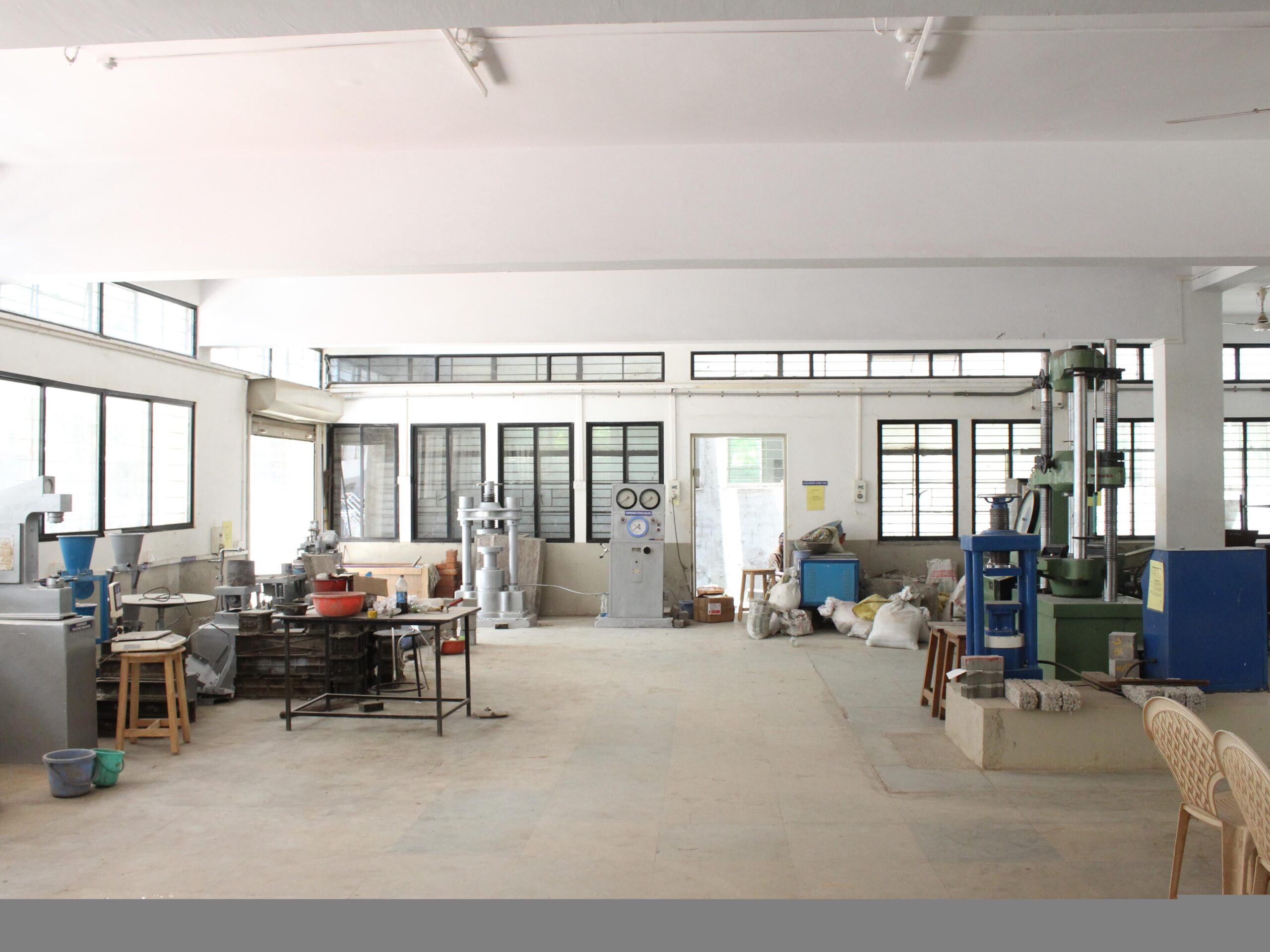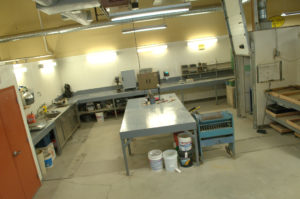Material Testing Lab Insights: Discover the Scientific Research Behind Project Durability
Material Testing Lab Insights: Discover the Scientific Research Behind Project Durability
Blog Article
Developments in Material Testing for Enhanced High Quality Assurance
From non-destructive testing techniques to automated systems, the field of product screening has seen impressive advancements. In this conversation, we will check out some of the most recent patterns in product testing, consisting of the use of advanced sensor innovations, the integration of information analytics, and the role of synthetic intelligence. Allow's dive right into the globe of innovations in material testing and find exactly how these innovations are shaping the future of quality assurance.
Non-Destructive Examining Methods
Non-Destructive Screening Techniques play a vital role in making sure the honesty and quality of products without endangering their architectural honesty. These approaches are employed in various markets, consisting of aerospace, building, and manufacturing, to find and identify flaws or abnormalities in materials or frameworks. By using non-destructive testing professionals, designers and techniques can examine the residential or commercial properties, attributes, and performance of materials without causing any damages.
One frequently used non-destructive screening technique is ultrasonic screening (UT) UT involves the usage of high-frequency audio waves to discover problems such as cracks, spaces, and incorporations in products.

Non-destructive screening techniques supply useful details regarding the quality and dependability of materials, guaranteeing that they fulfill the required requirements and specs. By carrying out these techniques, sectors can improve their high quality assurance processes, reduce the threat of failure or mishaps, and eventually deliver much safer and much more dependable products to consumers.

Automated Screening Systems
Automated screening systems have actually reinvented the field of material testing, supplying accurate and efficient techniques for assessing the high quality and stability of products. These systems make use of sophisticated innovations and algorithms to automate the testing procedure, lowering human mistake and increasing productivity.
One key advantage of automated screening systems is their capacity to execute examinations at a much faster price than manual testing techniques. With making use of robotics and sophisticated software, these systems can perform numerous examinations simultaneously, considerably lowering the time required for testing large sets of products.
Additionally, automated testing systems offer a greater degree of accuracy and precision contrasted to manual screening. They can carry out examinations with consistent specifications, guaranteeing that the results gotten are trustworthy and reproducible. By removing human subjectivity and irregularity, these systems offer a more unbiased assessment of worldly quality.
Additionally, these systems are equipped with advanced sensors and detectors that can discover also the tiniest flaws or discrepancies in material buildings. This allows very early discovery of potential concerns, enabling suppliers to take restorative activities before the products are made use of in important applications.
In enhancement to their effectiveness and accuracy, automated screening systems additionally improve security in material testing. By minimizing human involvement in potentially unsafe testing treatments, these systems minimize the risk of injuries and mishaps, making certain a much safer working setting.
Advanced Sensor Technologies
With the integration of advanced sensing unit technologies, material screening systems have accomplished even higher levels of accuracy and efficiency (material testing lab). Advanced sensing unit technologies play a vital role in enhancing the quality control process by providing real-time and exact information throughout product screening. These sensors can finding and gauging numerous physical buildings such as temperature level, strain, stress, and vibration, permitting a comprehensive analysis of the material's behavior under various conditions
Among the key developments in sensor modern technologies is the advancement of cordless sensing units. These sensors remove the requirement for cumbersome wiring and allow seamless data transfer, improving the overall adaptability and mobility of the testing process. In addition, wireless sensors can be quickly incorporated into existing product testing systems, making them a cost-efficient remedy for boosting and updating testing abilities.

Expert System in Material Testing
Expert system has changed the area of product screening, bringing unmatched degrees of precision, efficiency, and predictive abilities to the quality guarantee procedure. With the capability to assess huge amounts of data and identify patterns that might go unnoticed by human operators, AI algorithms have actually significantly enhanced the reliability of product testing treatments.
One of the crucial advantages of using AI in product testing is its capability to predict material actions under various problems. By educating AI designs on historical data, scientists can create anticipating versions that can approximate the his explanation performance of products in real-world scenarios. This allows suppliers to optimize material option and design, reducing the requirement for expensive and time-consuming experimental processes.
In addition, AI can automate and simplify the product screening process, boosting performance and decreasing human mistake (material testing lab). AI-powered systems can autonomously accomplish testing treatments, accumulate and evaluate data, and produce thorough reports. This not only conserves time but likewise ensures regular and trustworthy outcomes
Additionally, AI can spot and examine material issues or abnormalities with high precision. By contrasting test results to predefined criteria, AI algorithms can rapidly identify inconsistencies and alert drivers to potential problems. This early discovery of problems aids prevent malfunctioning materials from entering the manufacturing process, inevitably boosting item quality and client contentment.
Combination of Data Analytics
Data analytics plays a critical duty in the integration of product screening procedures, enabling producers to make and extract valuable understandings notified decisions. By using advanced analytic methods, makers can evaluate large volumes of data collected throughout material screening to identify patterns, trends, and abnormalities that might affect the top quality and performance of their items.
Combination of data analytics in material screening enables manufacturers to keep track of and assess different specifications and variables during the screening process. This includes elements such as temperature level, stress, strain, and other environmental problems that can impact the behavior and features of materials. By evaluating this data, suppliers can get a much deeper understanding of how various variables influence the performance and connect of their products.
Additionally, data analytics helps in recognizing potential issues or weaknesses in products, enabling makers to take aggressive measures to address these problems prior to they bring about product failings or safety risks. This positive strategy can significantly boost the overall quality control procedure and improve consumer fulfillment.
In addition to determining problems, information analytics can also enhance product testing procedures by identifying areas of improvement and recommending alterations in the screening procedures. By assessing historic information, producers can recognize patterns and patterns that can help them streamline their testing procedures, decrease costs, and enhance efficiency.
Final Thought
Non-destructive screening Our site techniques, automated testing systems, progressed sensor innovations, and the assimilation of information analytics have all played a substantial function in improving the precision and performance of product testing processes. Furthermore, the application of synthetic knowledge in material testing has further added to the advancement of even more exact and reliable testing strategies.
From non-destructive screening strategies to automated systems, the area of product testing has seen remarkable innovations. Clicking Here Wireless sensors can be quickly incorporated into existing product screening systems, making them a cost-efficient option for improving and updating testing abilities.
Integration of information analytics in product screening allows suppliers to keep an eye on and assess numerous criteria and variables during the testing procedure. Non-destructive screening techniques, automated screening systems, advanced sensor innovations, and the integration of data analytics have all played a substantial duty in improving the accuracy and performance of material testing processes. Additionally, the application of artificial intelligence in product testing has additionally added to the growth of more accurate and dependable screening techniques.
Report this page